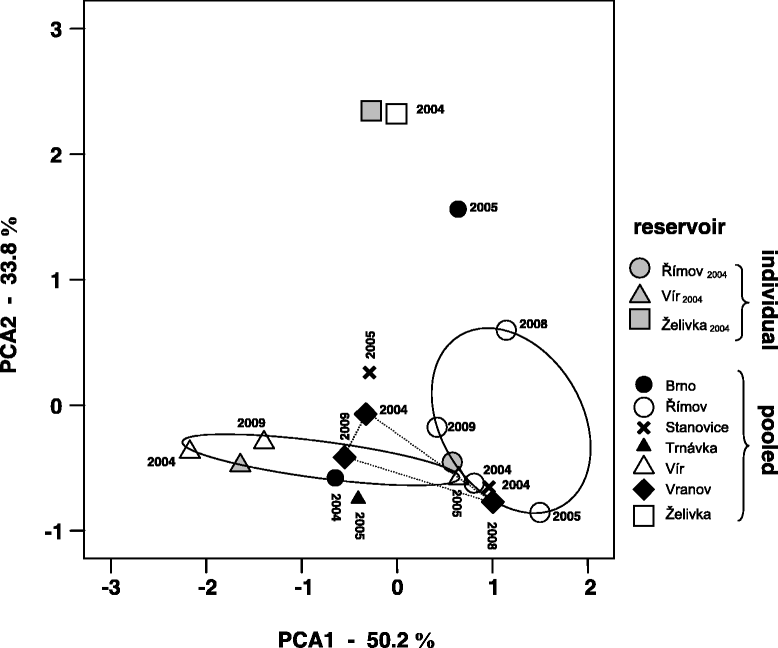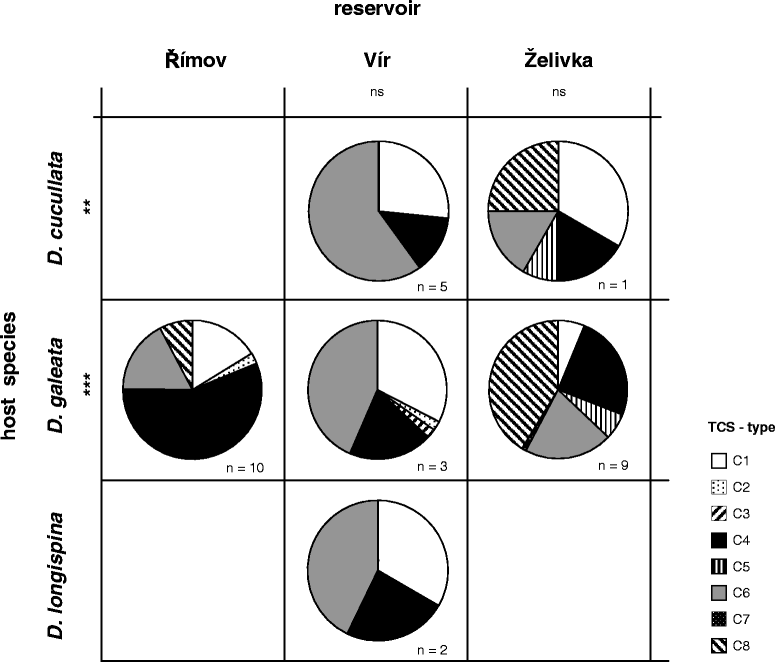Population structure of a microparasite infecting Daphnia: spatio-temporal dynamics
- PMID: 25471262
- PMCID: PMC4265321
- DOI: 10.1186/s12862-014-0247-3
Population structure of a microparasite infecting Daphnia: spatio-temporal dynamics
Abstract
Background: Detailed knowledge of spatial and temporal variation in the genetic population structure of hosts and parasites is required for understanding of host - parasite coevolution. As hot-spots of contemporary coevolution in natural systems are difficult to detect and long-term studies are restricted to few systems, additional population genetic data from various host - parasite systems may provide important insights into the topic. This is particularly true for parasites, as these players have been under-investigated so far due to the lower availability of suitable molecular markers. Here, we traced genetic variation (based on sequence variants in the internal transcribed spacer region, ITS) among seven geographically isolated populations of the ichthyosporean Caullerya mesnili, a common microparasite of the cladoceran Daphnia (here, the D. longispina hybrid complex). At three sites, we also studied parasite genetic variation over time (three to four sampling points) and tested for associations between parasite genotypes and host species.
Results: Parasite (and host) populations were significantly structured across space, indicating limited dispersal. Moreover, the frequency of parasite genotypes varied significantly over time, suggesting rapid evolutionary change in Caullerya. However, the distribution of parasite genotypes was similar across different host species, which might in turn have important consequences for parasite epidemiology.
Conclusions: The approach proposed here can be applied to track spatial and temporal changes in the population structure of other microparasite species for which sequence variation in the ITS or other highly variable genome regions has been documented but other types of polymorphic markers are lacking. Screening of parasite sequence variants allows for reliable detection of cross-species infections and, using advanced sequencing techniques in the near future, for detailed studies of parasite evolution in natural host - parasite systems.
Figures



References
Publication types
MeSH terms
Substances
Associated data
- Dryad/10.5061/dryad.6773H
- Dryad/10.5061/dryad.8C1D0
- Actions
- Actions
- Actions
- Actions
- Actions
- Actions
- Actions
- Actions
- Actions
- Actions
- Actions
- Actions
- Actions
- Actions
- Actions
- Actions
- Actions
LinkOut - more resources
Full Text Sources
Other Literature Sources
Research Materials

